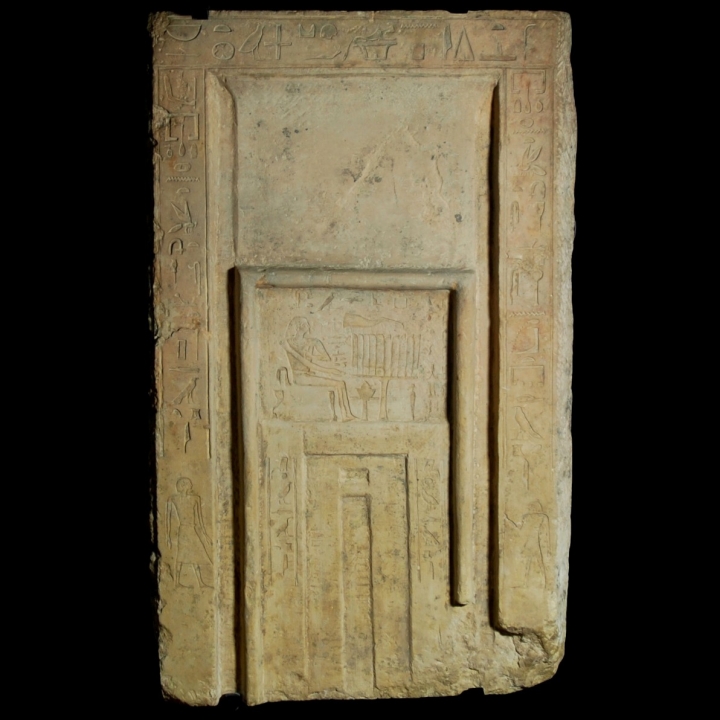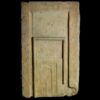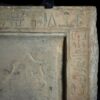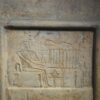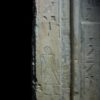False Door of the King’s Sealer Dagi
Culture: Egyptian
Period: First Intermediate Period, ca. 2180-2050 B.C.
Material: Limestone
Dimensions: 92 cm x 56 cm
Price: Sold
Ref: 1231
Provenance: Old French private collection. Auctioned at Drouot on 30 September 1999, lot 146. Accompanied by a French antiquities passport.
Condition: A chip at the bottom right, otherwise very well preserved.
Description: Large limestone false door once belonging to a man called Dagi, bearing the title “the King’s sealer” and “the King’s best friend”. False doors are part of the funerary architecture serving as the bridge between this life and the afterlife. On the one hand the deceased could interact through this “door” with the posterity, on the other hand his surviving dependents can get in contact with him and present offerings in front thereof. In the lower centre is the passage, this narrow “entrance” is flanked by two door posts. The outer inscribed posts mention the name of the owner, “the provided Dagi”. Above is the offering table scene depicting the tomb owner seated in front of the offering table. He rests his left hand, formed to a fist, on his own chest, the right hand reaching to the offering table. He wears an almost shoulder long wig, a multi-row collar and an apron reaching to the knees together with a belt. The table is set with ten breads forming standing papyrus panicles. Above the breads is a cattle’s limb. On both sides of the offering plate pedestals are vessels. On the right a slender, elongated Hes vase for water. The equipment on the left side is to be interpreted as a hand washing set. On the right side and on top the scene is framed by inscriptions. They list offerings which the deceased may enjoy in the afterlife. The outer borders of the plate again form an abstract door frame. In the lower part of the “outer” door frame the tomb owner can be seen again. He is in both cases depicted in a standing striding position and facing inwards. The rest of the area is covered by sunk hieroglyphs mentioning the owner’s titles and name. With an expertise, description and translation by the Munich Egyptologist Dr. Edith Bernhauer. Mounted.



